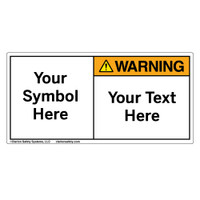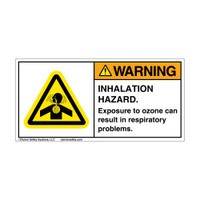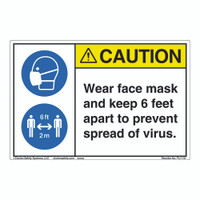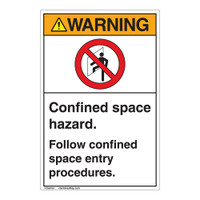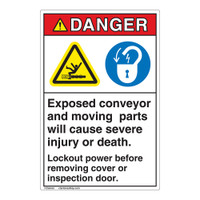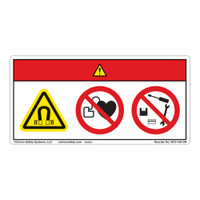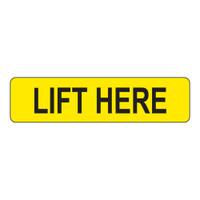-

-

Danger Arc Flash and Shock Label (H6643-262DH)
Starting at $0.86 / each -

Warning Arc Flash and Shock Label (H6643-T73WH)
Starting at $0.86 / each -

-

Danger Arc Flash And Shock Label (H6010-261DH)
Starting at $0.86 / each -

Danger Electric Arc Flash Label (H6010-260DH)
Starting at $0.86 / each -

-

Danger Arc Flash and Shock Label (H6643-261DH)
Starting at $0.86 / each -

Danger Hazardous Voltage Label (H6010/6127-PMDH)
Starting at $1.16 / each -

Danger Shock and Arc Flash Label (HMS5-475DH)
Starting at $3.57 / each -

Danger Electric Arc Flash Label (H6643-260DH)
Starting at $0.86 / each -

Danger Shock and Arc Flash Label (HMS4-586DV)
Starting at $3.57 / each -

Warning Potential Arc Flash Label (H6006-718WH)
Starting at $0.86 / each -

Danger Shock And Arc Flash Label (H6010/6006-263DH)
Starting at $1.16 / each -

Warning Arc Flash And Shock Label (H6010-T73WH)
Starting at $0.86 / each -

Danger Shock & Arc Flash Label (H6010/6006-1PDH)
Starting at $0.86 / each -

-

Danger Shock And Arc Flash Label (H6643-263DH)
Starting at $0.86 / each -

Warning Potential Arc Flash Hazard Label (H6010-U82WH)
Starting at $0.86 / each -

Warning Potential Arc-Flash Label (H6010-9VWH)
Starting at $0.86 / each -

Warning Arc Flash & Shock Hazard Label (H6643/6062-V25WH)
Starting at $1.16 / each -

Warning Shock & Arc Flash Label (H6643-1PWH)
Starting at $0.86 / each -

-

Danger Shock And Arc Flash Label (H6010/6006-K07DH)
Starting at $1.16 / each -

Danger Shock & Arc Flash Label (H6643-1PDH)
Starting at $0.86 / each -

Danger Shock & Arc Flash Label (H6643/6062-K87DH)
Starting at $1.16 / each -

Warning Potential Arc Flash Hazard Label (H6643-U82WH)
Starting at $0.86 / each -

Danger Shock And Arc Flash Label (H6643-K07DH)
Starting at $0.86 / each -

Warning Potential Arc Flash Label (H6643-9VWH)
Starting at $0.86 / each -

Danger Shock & Arc Flash Label (H6643-K87DH)
Starting at $0.86 / each -

Danger Arc Flash And Shock Label (H6010-B06DH)
Starting at $0.86 / each -

Warning Potential Arc Flash Label (H6643-718WH)
Starting at $0.86 / each -

Danger Arc Flash And Shock Label (H6643-262DV)
Starting at $0.86 / each -

-

Warning Arc Flash And Shock Label (H6643-T73WV)
Starting at $0.86 / each -

Danger Electric Arc Flash Label (H6643-260DV)
Starting at $0.86 / each
Arc flash labels identify hazards and inform personnel about safety issues, helping to reduce the risk of personal injury or death for those who work on or near energized electrical equipment. An arc flash is when a flashover of electric current leaves its intended path and travels through the air to another conductor or the ground. These events occur 5-10 times a day in the United States. Arc flash can be caused by accidental contact, condensation, corrosion, dust, material failure, and many other events. The intense heat that arc flashes give off makes just about anything that's within the vicinity of them potentially flammable, including clothing, equipment, and furniture. Because of this, hazard mitigation strategies must be implemented. Using safety labels and stickers with thorough and best practice content, including symbols, is an important way to communicate about these electrical hazards.
Clarion Safety’s arc flash safety labels comply with NFPA 70E and NEC arc flash labeling practices and use the ISO 7010 symbol “To warn of an arc flash” which was standardized in 2016. NEC regulations require that these markings are placed in a location where they are clearly visible before anyone begins work, commonly on the outside of panel boards, switchboards, and meter socket enclosures. OSHA also requires every piece of equipment operating at 50 volts or more and not put into a de-energized state to be evaluated for arc shock and flash protection.
Through our leadership in ANSI and ISO, we’re pleased to have been a part of the working effort to have a single standardized graphic, helping to promote a global understanding of the potential for arc flash hazards. Our “general” arc flash safety labels are used by equipment manufacturers to indicate the need to follow NFPA 70E safety practices and PPE requirements when servicing the equipment. Our “specific” multi-field arc flash labels are used by equipment owners to convey precise information related to each piece of their equipment (and their power supplies), using data from their arc flash studies.
Keep your team protected and in compliance with safety protocols with Clarion Safety’s line of arc flash hazard labels. Don’t see the safety label you need? Contact us for more information on how we can provide arc flash safety solutions for your workplace.
Unsure about the right label for your needs? A Clarion Safety label assessment can help.
Download Our Quick Guide to Label Assessments
